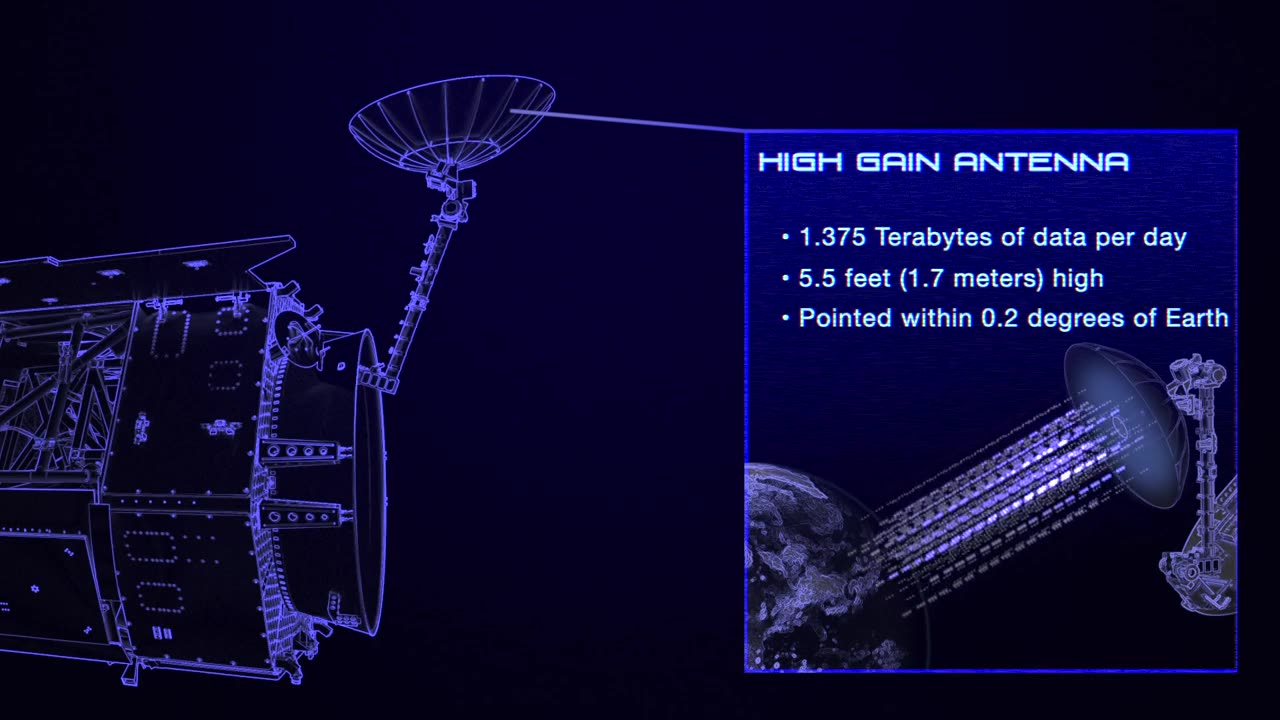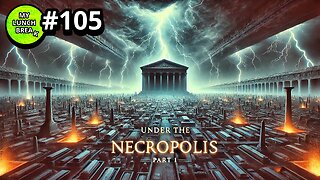Premium Only Content

Take a Spin With NASA's Nancy Grace Roman Space Telescope
On schedule to launch no later than May 2027, NASA’s Nancy Grace Roman Space Telescope mission will help uncover some of the biggest mysteries in the cosmos. The state-of-the-art telescope on the Roman spacecraft will play a significant role in this, providing the largest picture of the universe ever seen with the same depth and precision as the Hubble Space Telescope. The Nancy Grace Roman Space Telescope has successfully passed its critical design review, signaling that all design and developmental engineering work is now complete. The Roman Space Telescope is a high-precision survey mission that will advance our understanding of fundamental physics. Roman is similar to other space telescopes, like Spitzer and the James Webb Space Telescope, in that it will detect infrared light, which is invisible to human eyes. Earth’s atmosphere absorbs infrared light, which presents challenges for observatories on the ground. Roman has the advantage of flying in space, above the atmosphere. The Roman Space Telescope will collect and focus light using a primary mirror that is 2.4 meters in diameter. While it’s the same size as the Hubble Space Telescope’s main mirror, it is only one-fourth the weight, showcasing an impressive improvement in telescope technology. The mirror gathers light and sends it on to a pair of science instruments. The spacecraft’s giant camera, the Wide Field Instrument (WFI), will enable astronomers to map the presence of mysterious dark matter, which is known only through its gravitational effects on normal matter. The WFI will also help scientists investigate the equally mysterious "dark energy," which causes the universe's expansion to accelerate. Whatever its nature, dark energy may hold the key to understanding the fate of the cosmos. In addition, the WFI will survey our own galaxy to further our understanding of what planets orbit other stars, using the telescope’s ability to sense both smaller planets and more distant planets than any survey before (planets orbiting stars beyond our Sun are called "exoplanets"). This survey will help determine whether our solar system is common, unusual, or nearly unique in the galaxy. The WFI will have the same resolution as Hubble, yet has a field of view that is 100 times greater, combining excellent image quality with the power to conduct large surveys that would take Hubble hundreds of years to complete. Roman’s Coronagraph Instrument will demonstrate technology to directly image exoplanets by blocking out the light of their host stars. To date, astronomers have directly imaged only a small fraction of exoplanets, so Roman’s advanced techniques will expand our inventory and enable us to learn more about them. Results from the Coronagraph will provide the first opportunity to observe and characterize exoplanets similar to those in our solar system, located between three and 10 times Earth’s distance from the Sun, or from about midway to Jupiter to about the distance of Saturn in our solar system. Studying the physical properties of exoplanets that are more similar to Earth will take us a step closer to discovering habitable planets. Music credit: “Phenomenon" from Above and Below Written and produced by Lars Leonhard Credit: NASA's Goddard Space Flight Center Scott Wiessinger (KBRwyle): Lead Producer Michael Lentz (KBRwyle): Lead Animator Claire Andreoli (NASA/GSFC): Lead Public Affairs Officer Francis Reddy (University of Maryland College Park): Science Writer Ashley Balzer (ADNET): Writer Scott Wiessinger (KBRwyle): Narrator This video can be freely shared and downloaded at https://svs.gsfc.nasa.gov/13295. While the video in its entirety can be shared without permission, the music and some individual imagery may have been obtained through permission and may not be excised or remixed in other products. Specific details on such content may be found here: https://svs.gsfc.nasa.gov/13295. For more information on NASA’s media guidelines, visit https://nasa.gov/multimedia/guidelines. If you liked this video, subscribe to the NASA Goddard YouTube channel: https://www.youtube.com/NASAGoddard Follow NASA’s Goddard Space Flight Center · Instagram http://www.instagram.com/nasagoddard · Twitter http://twitter.com/NASAGoddard · Twitter http://twitter.com/NASAGoddardPix · Facebook: http://www.facebook.com/NASAGoddard · Flickr http://www.flickr.com/photos/gsfc
#NASA #SpaceExploration #Astronomy #SpaceScience #SpaceDiscovery #RocketLaunch #SpaceMission #CosmicWonders #StellarObservations #Astronauts #PlanetaryExploration #GalacticWonders #Universe #SpaceTechnology #Astrophysics #NASAInnovation #HubbleSpaceTelescope #MarsExploration #InternationalSpaceStation #NASAHistory
-
 12:19
12:19
Tundra Tactical
8 hours ago $7.09 earnedDaniel Penny Beats Charges in NYC Subway Killing
30.8K5 -
 29:53
29:53
MYLUNCHBREAK CHANNEL PAGE
1 day agoUnder The Necropolis - Pt 1
88.2K43 -
 2:00:10
2:00:10
Bare Knuckle Fighting Championship
3 days agoCountdown to BKFC on DAZN HOLLYWOOD & FREE LIVE FIGHTS!
42.6K3 -
 2:53:01
2:53:01
Jewels Jones Live ®
1 day agoA MAGA-NIFICENT YEAR | A Political Rendezvous - Ep. 103
100K23 -
 29:54
29:54
Michael Franzese
11 hours agoCan Trump accomplish everything he promised? Piers Morgan Article Breakdown
104K49 -
 2:08:19
2:08:19
Tactical Advisor
15 hours agoThe Vault Room Podcast 006 | Farwell 2024 New Plans for 2025
178K11 -
 34:12
34:12
inspirePlay
1 day ago $5.45 earned🏆 The Grid Championship 2024 – Cass Meyer vs. Kelly Rudney | Epic Battle for Long Drive Glory!
80.3K8 -
 17:50
17:50
BlackDiamondGunsandGear
13 hours ago $2.61 earnedTeach Me How to Build an AR-15
54.9K6 -
 9:11
9:11
Space Ice
1 day agoFatman - Greatest Santa Claus Fighting Hitmen Movie Of Mel Gibson's Career - Best Movie Ever
114K47 -
 42:38
42:38
Brewzle
1 day agoI Spent Too Much Money Bourbon Hunting In Kentucky
76.6K12